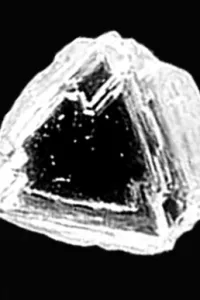When defining sparkle in a diamond, there are only two things that matter — efficiency and amplified light return.
- Efficiency rating (E.R.) is a measure of the refracted light entering a diamond that is returned to your eye.
- Amplified light return (A.L.R) is the number of visible internal light reflections that a diamond has per every ray (signal) of light that enters it.
Note: Weighted Light Return (more commonly know as brightness) = E.R. * A.L.R
A typical run-of-the-mill diamond has an efficiency rating of 35.5% and an A.L.R rating of five (5). Translation: The typical diamond returns 35.5% of refracted light back to the viewer’s eyes; leaks/wastes 64.5% through the pavilion floor of the diamond and only redirects the light internally five (5) times before it leaks out or is returned to be viewed.
A pinball machine is a good analogy here. Think of every ray of light as a pinball. Once the pinball is shot (refracted) into play within the machine (diamond) you score more points (flashes of light) every time the pinball bounces around (internal light reflections) before it is returned back to you in the form of sparkle. Sparkle equals efficiency rating x internal light reflections. So we could say that the typical diamond returns 35.5% of absorbed light and amplifies it five (5) times to give you a sparkle return of 177.5%. You get 77.5% more light then you put in even though there was a lot of waste. This is why most people who see practically any diamond will,at first blush, be impressed. The truth is even bad diamonds look pretty good. But, what if we’re not just looking for pretty good? What if our goal is to have the highest efficiency rating; the highest amplified light return? What would that look like? Well, let’s see, if we are going to hold the most breathtaking diamond in the world we’re going to have to be patient, and I mean really patient! The typical diamond that is cut these days is cut from two types of rough (name for what diamonds look like out of the ground) macles and flats. See below.


These are also called irregulars or preemies (300 to 400 million years old). Preemies are rough diamonds that Mother Nature did not allow to go to full term. Full term crystals, also referred to as sawables, are the most valuable. They are typically found in octahedron, cubic, and dodecahedron shapes. See below.



The key to having the best finished product begins by only choosing full term rough. It takes a minimum of 800 million years, not 400 million years, for Mother Nature to deliver a magnificent fully crystallized, full term rough. The irregulars are flat, skipping-stone looking pieces of rough that have an irregular carbon atomic structure. Don’t forget shape determines function! If we don’t have a nice shape to work with we won’t be able to cut the diamond properly.
Ninety-eight percent of the diamonds being sold today are being cut from premature rough and only two percent are being cut from full term rough. So that’s step one. “Better ingredients, better pizza!” Once we’ve got the rare full term rough, we go through a second screening process and throw out any rough that has too much nitrogen or is too heavily included. In order to reach our goal the diamond must not be any lower than a hard graded VS2 clarity or H5 color. By hard graded, I mean the vendor guarantees that no accredited gemologist will ever grade the diamond lower than the assigned grade or you get your money back. Other rating agencies — GIA, EGL, IGI, AGS, etc. all soft grade their stones, which means they don’t guarantee their grades. Once we have the desired full term rough with the correct grades, we can move on to a master cutter. It doesn’t do any good to have the world’s greatest material if we put it in the hands of a poor craftsman. The master cutter will make sure the diamond is cut to class 1 or class 2 specifications (see other article on class of cut for explanation). But, basically, the diamond will have to meet strict proportion guidelines in order to handle the light properly.
Okay. Buy hard-graded full term rough (most expensive) and have a master cutter cut it (more expensive) equals finished product.

The picture you see is a photograph taken with regular light on a black field. What you are seeing is the most efficient, highest amplified light return diamond in the world! The name given to the most breathtaking diamonds has always been vivid! This is The Vivid White Diamond®!
Let’s do the math! The Vivid White Diamond® has an efficiency rating of 91% and A.L.R of 100. So if we want to calculate the sparkle of this gem we multiply the efficiency rating x the A.L.R. — 91% x 100 =9100% light return! 100% goes in; 9100% comes out!
The reason Cartier; Graff; Van Cleef & Arpels and Harry Winston get $35,000 to $56,000 for a single one carat diamond is actually rather simple. They are all vivid white diamonds®! When people run to online consolidators like Blue Nile, Amazon, or Ebay; mall stores like Zale’s, Tiffany’s, Kay’s, Jared’s, Robbins Brothers and big box stores like Walmart, Costco or Sam’s, you’re buying diamonds that are pretty good because you get 77% more light return in good lighting conditions but when you buy a Vivid White Diamond® you are getting 9000% more amplified light. Some old sayings are still true today, “You get what you pay for.” By the way, the #1 complaint a woman has about her diamond isn’t size, its sparkle. So, if you really want to make her happy buy The Vivid White Diamond®.
